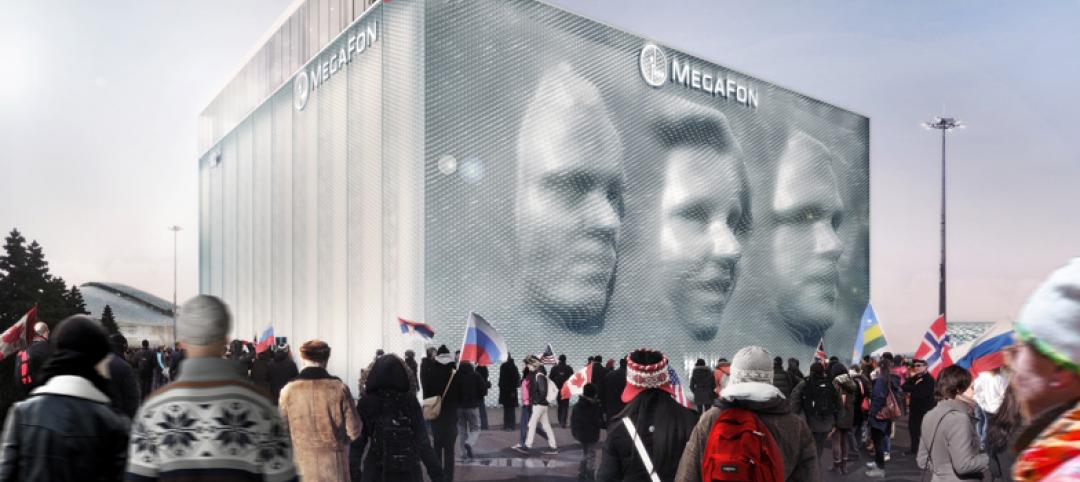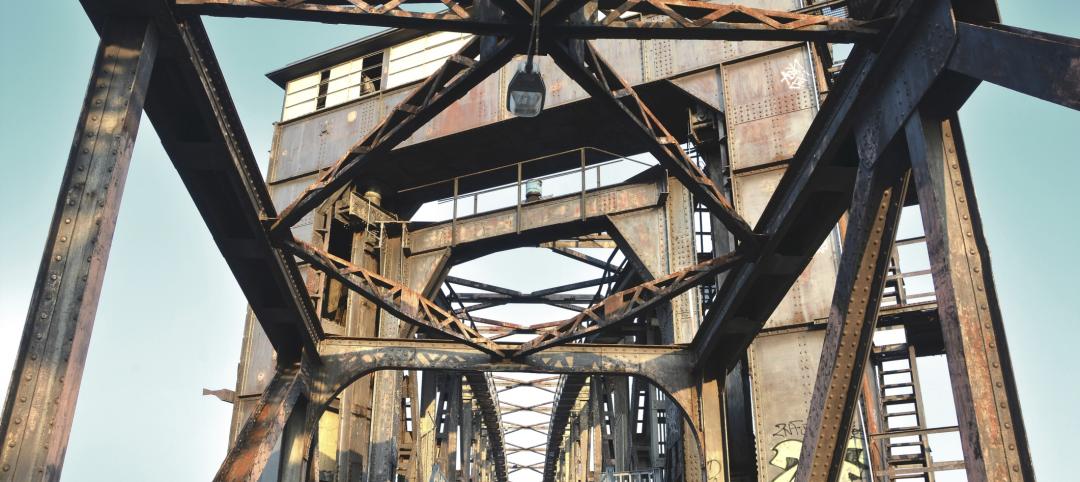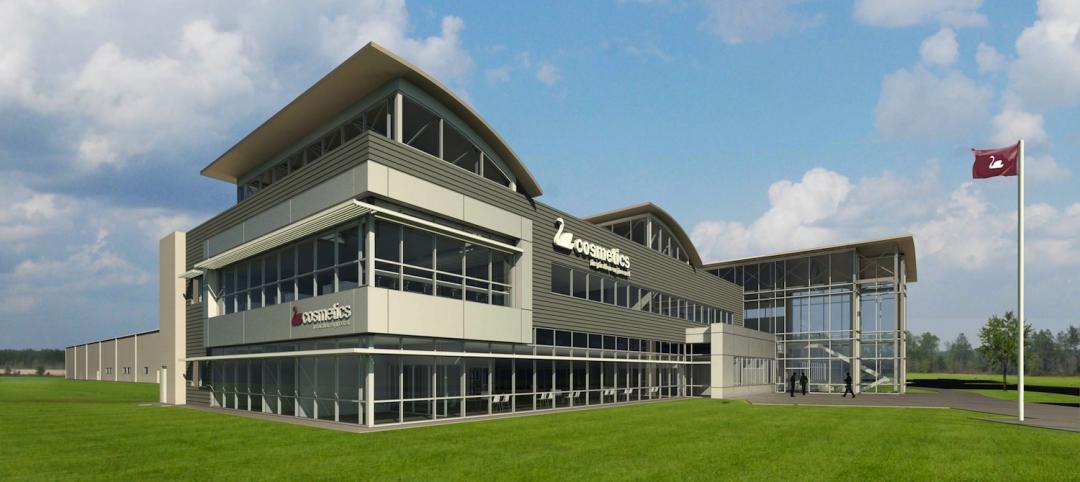By 2020 there will be as many as 50 billion active Internet-connected devices worldwide. Every device throws off “digital exhaust” that provides clues about the user’s preferences and whereabouts, to say nothing of the massive amounts of information mobile devices transmit via social media.
“These are the kinds of data we should be measuring when planning cities,” said David Fano, Partner and Managing Director at Case, the New York–based building information modeling consultancy, during the firm’s first-ever bldgs = data conference, held May 28 at The Standard, along New York City’s High Line. (Editor's Note: Case was acquired by WeWork in August.)
In his opening remarks, Fano advocated for advancing ways to aggregate personal behavior data from inside buildings to extend the definition and application of BIM.
Conference speakers provided examples of how their companies use deep data to comprehend the urban landscape, gain insights into projects and employees, and facilitate growth.
Blake Shaw, Head of Data Services at Foursquare, the personalized local search tool, described how digital trails serve as “microscopes” to observe a city as if it were an organism. He showed heat maps generated by data collected from users’ mobile devices in several cities (including New York and Istanbul) as those users entered different venues. Tracked over time, these maps pick up on a city’s rhythm and pulse.
Foursquare is developing data-driven products that will be able to text recommendations to users when they enter a city or a specific environment, such as a restaurant or retail store. The goal, said Shaw, is “to predict where people will go next”—information that could be invaluable to merchants’ marketing efforts. “Finally, we have a way of measuring this,” he said.
Coordinating project activity
A roundtable discussion with AEC professionals focused on how Building Teams are using data to manage projects and people.
“Data are tools to inform experience,” said Brian Cheng, Designer and Associate with HDR Architects. Cheng profiled a hospital tower at the University of Pennsylvania in Philadelphia, for which HDR used activity data to develop dashboards and inform its design.
Jennifer Downey, National BIM Manager with Turner Construction, noted that on many projects there is often “little correlation between cost and contingency.” Introducing a data-informed model into the equation can “help achieve consensus,” she said.
Case in point: the Wilshire Grand Hotel, currently under construction in downtown Los Angeles, where Turner executed the largest continuous slab pour ever attempted. BIM modeling was imperative to coordinate the caravan of cement trucks needed for the 21,600-cubic-yard pour, which took 20 hours to complete.
Downey pointed to another project, a hospital in Washington, D.C., whose Building Team saved six to eight weeks of rough-in time by agreeing to go with prefabrication for 157 patient rooms.
Peter Raymond, CEO of New York–based tech consultant Human Condition, detailed his firm’s work with Microsoft and Autodesk to refine sensor technology that is embedded into work clothes, such as safety vests. The sensors would track a worker’s activities and transmit information to a supervisor’s mobile device.
Raymond suggested the data could be extremely useful for safety and training, and for addressing behavioral issues. He referred to this product, which is still being tested, as “a social experiment.”
Monitoring subs’ performance
Rogers-O’Brien Construction, a Texas-based contractor, uses data to get a better handle on the performance of its subcontractors. “We wanted to capture what was happening in the field,” said Todd Wynne, the company’s Construction Technology Manager.
For the past two years the firm has been using project management software from FieldLens in its work on Forest Park Medical Center, a 154,000-sf acute-care hospital in San Antonio with 54 beds and 12 operating rooms. Next door is an 84,000-sf, four-story medical office building. The schedule for the combined project, from development to opening, was set at 13 months, which Wynne conceded “was unmanageable for the trades and supervisor.”
Wynne said there were around 7,000 “issues” on the project. One of the hospital’s 16 VIP patient suites had to be retiled three times. There were 1,311 paint problems, mostly related to the quality of the finishes. Each cost the contractor $25 in lost time or extra work.
Data on workers’ performance informed the GC of which subs were helping or hurting the project. That data inevitably influenced its hiring decisions down the road. Having the historical data will enable the firm to predict potential pressure points on future projects.
Over the past decade, home furnishings retailer Crate & Barrel has used BIM on 45 projects. Each new store is unique—the company doesn’t use a prototype, said Director of Construction John Moebes—and requires a complex array of materials that includes 14 miles of wood board and more than a mile of track lighting.
During the past recession, Crate & Barrel mandated a 30–50% reduction in construction costs and a 40–50% reduction in construction time. To comply with those targets, Moebes’ team decided to use tilt-up walls to lower concrete costs. The retailer relies on BIM to simplify the installation of its stores’ spider-web electrical network.
Moebes said that Crate & Barrel has “more confidence” in contractors that track their subs’ performance and hire accordingly. Other panelists said that AEC firms must shoulder some blame for the performance of subs who are rarely included in early design or construction discussions with clients.
“I see a lot of knowledge on the job site that does not get used in the early design of a project,” said Raymond. FieldLens’s CEO, Doug Chambers, agreed, and viewed subs’ input as another data point. “The industry has to recognize that the knowledge in the field has to be unleashed, and disseminated into the technology.”
That’s not going to happen, says Chambers, until the industry gets over its phobia about sharing information.
BIM in workspace renovation
Data is starting to drive the growth of WeWork, a five-year-old redeveloper of affordable urban workspaces, with locations in 11 U.S. cities and more than 30,000 customers. The New York–based company plans to open 40 to 50 locations by next June, and expects to add 50 million sf of space in the next five years.
WeWork looks at 10–15 buildings a week. “We needed a way to see if the building is right for us,” said EVP of Development and Special Projects Roni Bahar. With Case’s help, the company developed standards and templates for space, design, and construction. It has also assembled a component library.
WeWork uses Revit on all of its projects. The company can frame out a 35,000-sf space in two weeks.
“Quality is our next target,” said Bahar, as his company expands into ground-up construction and live/work options. Bahar said that WeWork is also ready to take the logical next step: collecting data on the activities of its customers and users to guide its design, growth, and corporate strategies.
Related Stories
| Jul 11, 2014
Are these LEGO-like blocks the future of construction?
Kite Bricks proposes a more efficient way of building with its newly developed Smart Bricks system.
| Jul 1, 2014
Hyper-speed rendering: How Gensler turns BIM models into beauty shots in seconds
In search of a fast rendering solution, Gensler looked to the gaming and moviemaking industries for the next breakthrough tool: Octane Render.
| Jul 1, 2014
Sochi's 'kinetic façade' may steal the show at the Winter Olympics
The temporary pavilion for Russian telecom operator MegaFon will be wrapped with a massive digital "pin screen" that will morph into the shape of any face.
| Jul 1, 2014
7 ways to cut waste in BIM implementation
Process mapping, split models, and streamlined coordination meetings are among the timesaving techniques AEC firms are employing to improve BIM/VDC workflows.
| Jun 30, 2014
Autodesk acquires design studio The Living, will create Autodesk Studio
The Living, David Benjamin's design studio, has been acquired by Autodesk. Combined, the two will create the Autodesk Studio, which will "create new types of buildings, public installations, prototypes and architectural environments."
| Jun 30, 2014
Report recommends making infrastructure upgrades a cabinet-level priority
The ASCE estimates that $3.6 trillion must be invested by 2020 to make critically needed upgrades and expansions of national infrastructure—and avoid trillions of dollars in lost business sales, exports, disposable income, and GDP.
| Jun 25, 2014
Taking a page from Lean manufacturing for improved design review processes
SPONSORED CONTENT As more building project teams look for ways to collaborate better, technology continues to provide solutions. Yet, as I learned from the experience of one of my customers, choosing the wrong technology can have an underwhelming effect, causing a team to simply swap out old challenges for new ones.
| Jun 18, 2014
Arup uses 3D printing to fabricate one-of-a-kind structural steel components
The firm's research shows that 3D printing has the potential to reduce costs, cut waste, and slash the carbon footprint of the construction sector.
| Jun 10, 2014
Site optimization: Paving the way for smoother land development projects
The biggest cost differential when dealing in site development from one site to another is the earthwork. So, when selecting a site, it is critical to not only take into account the initial purchase price of the property, but also what sort of investment it will take to prep the site for development.
Smart Buildings | Jun 8, 2014
Big Data: How one city took control of its facility assets with data
Over the past few years, Buffalo has developed a cutting-edge facility management program to ensure it's utilizing its facilities and operations as efficiently, effectively, and sustainably as possible.
















